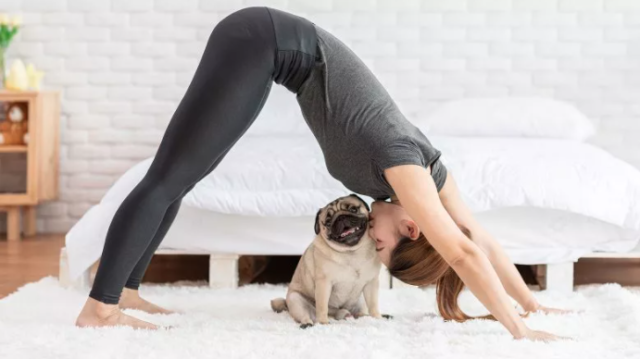Morning workout charges you with vivacity and energy: a complex for adults and children

Morning workouts are a cool and important way to start the day with a healthy body, awaken your body, and tune in for the day. Even in a big city, many lead a sedentary lifestyle, which affects the general vitality, or rather its absence. Lack of strength, fatigue, drowsiness are a small part of the conditions that manifest themselves in people living without sports
Morning exercises: why you need it
It is recommended to do morning exercises for many reasons:
- contributes to the normalization of the respiratory and nervous system,
- has a positive effect on muscle tone;
- gives a boost of vivacity for the whole day;
- improves mood;
- enhances immunity;
- reduces the risk of developing degenerative changes in the joints and spine;
- helps the body to warm up well after a static position in which you sleep for several hours.
During sleep, all vital processes of the body slow down, and when a person wakes up, the body is in a transitional state. Therefore, you should not immediately load him with hard workouts, it is better to do gymnastics, which will be aimed at increasing the mobility of the joints and spine, strengthening the muscles of the core. It is advisable to start with a few versatile exercises that are suitable for people of any gender and age:
Morning exercises: exercise
1. Starting position – standing. As you inhale, step with your right foot forward, leaving your left foot behind. Stretch your arms up, straighten the thoracic spine without bending in the lumbar spine. As you exhale, take a step back with your right leg, keeping your left leg straight. Bend towards the left leg and lock the left foot towards you to feel a stretch along the backline. Try to maintain axial tension throughout the exercise. Perform eight movements, repeat on the other side.
2. Starting position – standing. The feet are parallel to each other and hip-width apart. Drive with your hands forward to the plank position. From the plank position, lift the pelvis (dog face down) and touch the foot with the opposite hand. Then return to the plank, repeating the movements on the other side, and then go to the starting position. Do eight reps.
3. Starting position at four points of support. Knees under the pelvis, palms under the shoulder joint. The lower back is in a neutral position, the abdominal muscles are working, alternately and low stretch the opposite arm and leg. Pay attention to the work of the abdominal muscles, the lower back remains stable. Do it very slowly and in a controlled manner, on average one and a half minutes.
4. Starting position at four points of support. The knees are under the pelvis, the palms are under the shoulder joint. We launch a wave along the entire spine from the coccyx to the head. On exhalation, gently through the deflection, we leave with the pelvis on the heels, while inhaling with a rounded back, we return to the starting position. Feel how the vertebrae are alternately connected to the movement. Perform eight full wave cycles.
5. Starting position Z-seat, try to catch the vertical axis in the spine and maintain it. Try to lower both buttocks to the floor: this way we develop the mobility of the hip joint. As a progression, start moving from one side to the other, keeping your feet in place. Work only by rotating the hip inside the joint. Do 10 reps on each side.